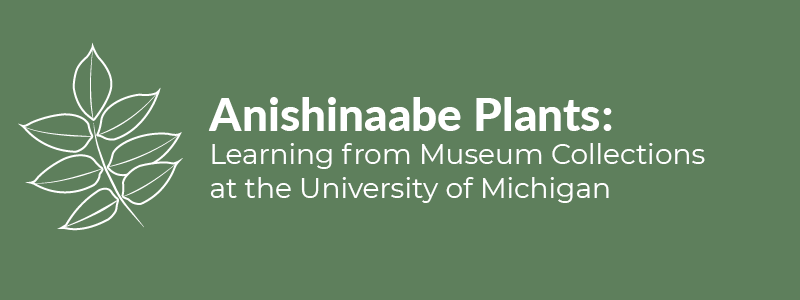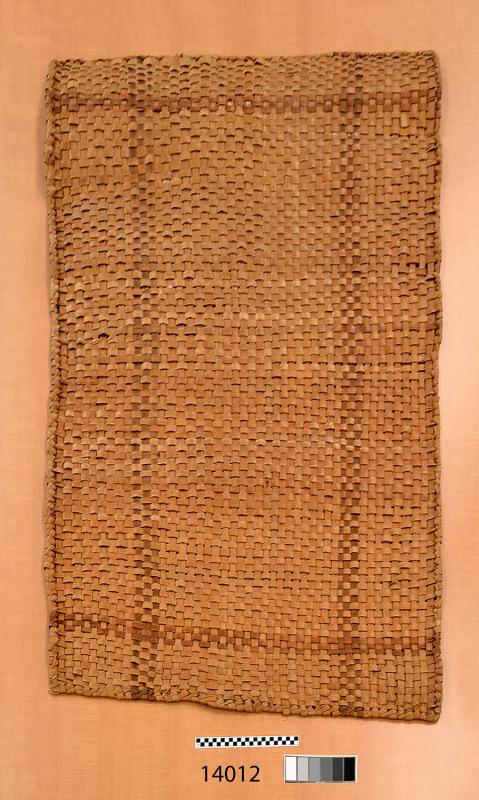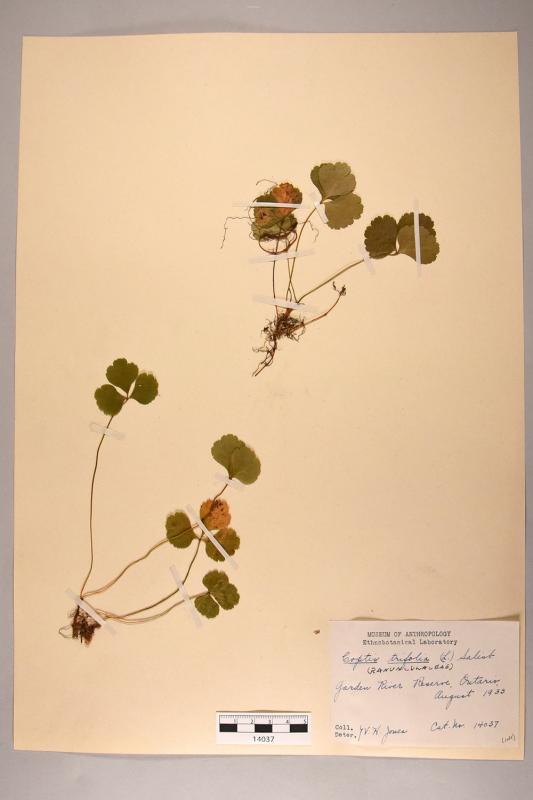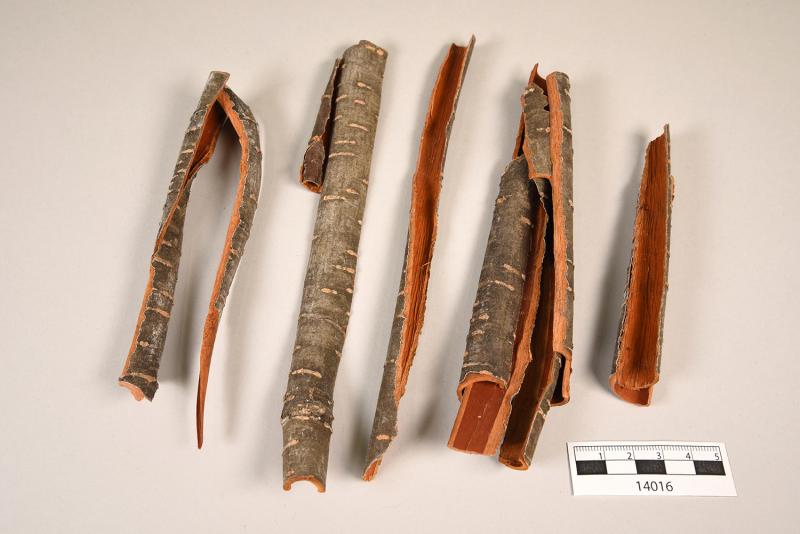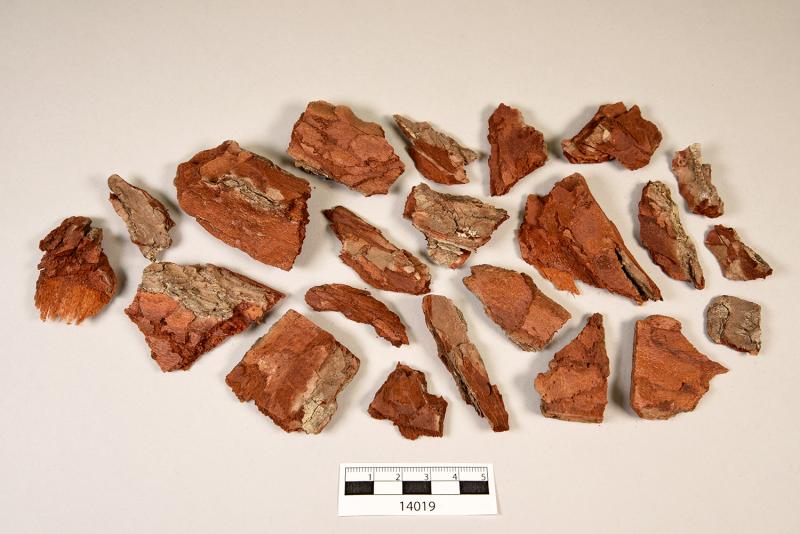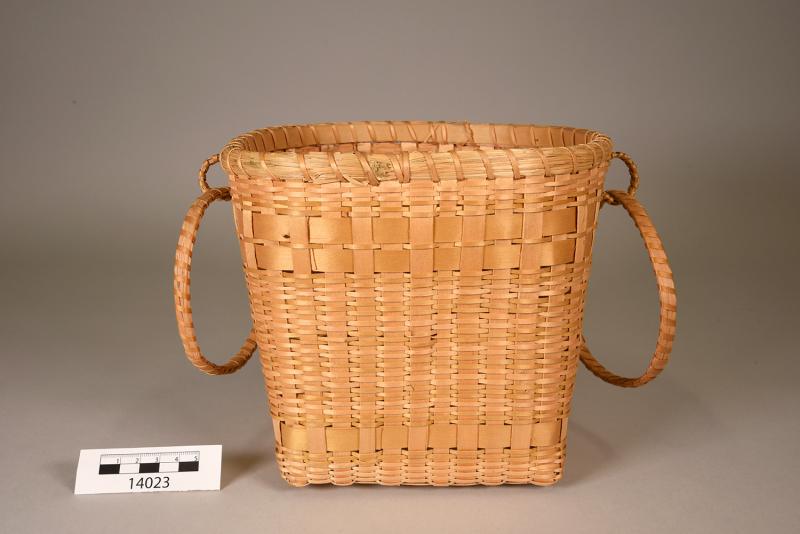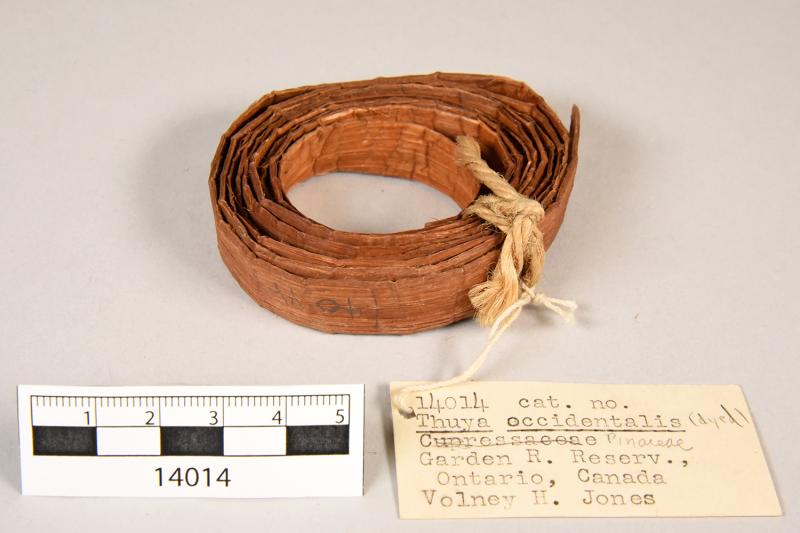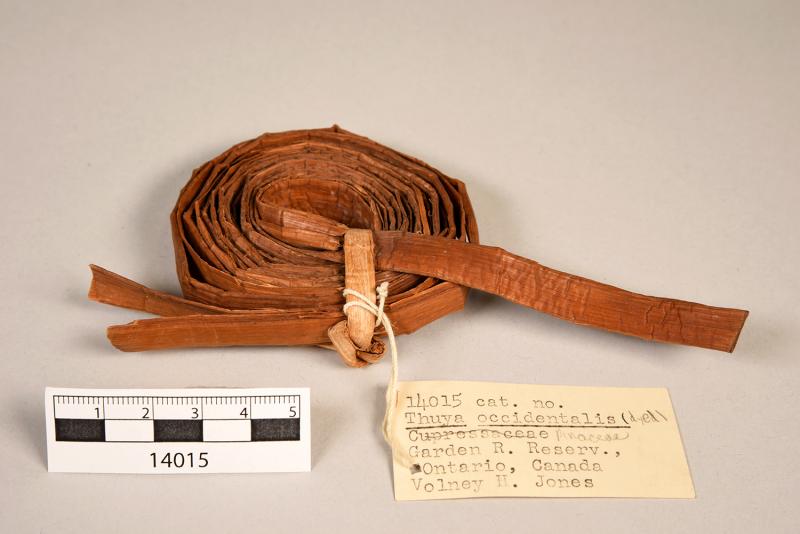Natural Dyes
To learn what plants Anishinaabe weavers used to make natural dyes, Jones asked Mary Belanger, one of the few people in Garden River with this type of knowledge, to show him how she made these dyes. Mrs. Belanger made dyes from two different plants: Three Leaf Goldenthread and Bloodroot. She had recently gathered both plants and chopped the bloodroot, before placing each sepeartly into boiling water for about 15 minutes. Basket splints taken from a freshly hewed log were placed in the hot water and left for 10 minutes to dye.
Mrs. Belanger expected the bloodroot dye to be a reddish-orange, but the splints were instead a light yellowish-grey after removed from the pot. The Goldenthread however worked as planned, producing a “delicate yellow.”
Mrs. Belanger then experimented with tamarack bark and elder bark, two plants she said her mother had used as dyes. These did not have the intended effect, and she commented that her mother must have used a mordant, like grindstone dust or ferruginous soil to help the dyes bind to the wood. Unfortunately, Mrs. Belanger did not remember this process.
Mrs. Belanger also used bloodroot to dye strips for the large cedar mat that she made for Jones. To make this dye, she boiled the root of the plant. Almost 100 years later, the red dye is still visible. Strips dyed with Goldenthread were used by Mrs. Boyer in the weaving of a basket for Jones. Today, the color has faded and is no longer visible. Mrs. Belanger also made for Jones cedar strips dyed with black alder and hemlock. In this recipe for red dye, mineralized sand gathered from a riverbank and ash made from inner cedar bark were added to boiling water with the bark of black alder and hemlock.
Students in the 2022 Museum Anthropology course will add information about how Mrs. Smith dyed rushes with black walnut.
